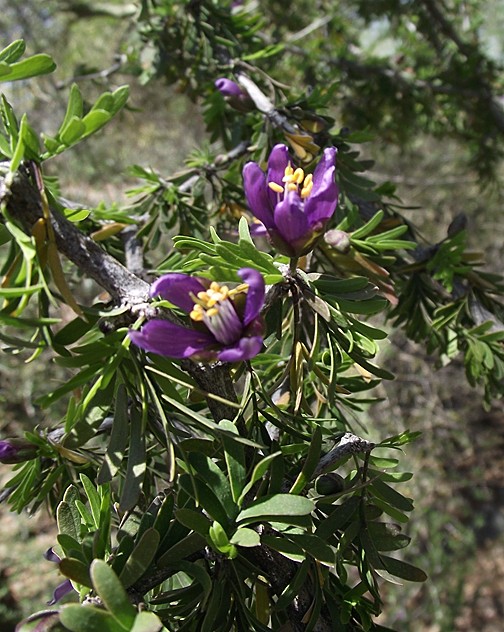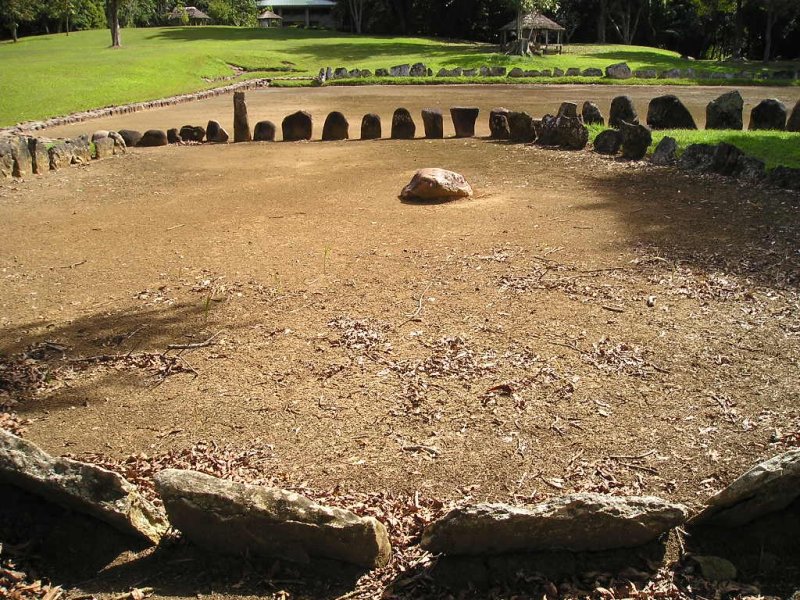|
Guaiacum
''Guaiacum'' (''OED'' 2nd edition, 1989.Entry "guaiacum" in Merriam-Webster Online Dictionary ', retrieved 2013-04-30.), sometimes spelled ''Guajacum'', is a of s in the family |
Guaiacum Sanctum
''Guaiacum sanctum'', commonly known as holywood, lignum vitae or holywood lignum-vitae, is a species of flowering plant in the Larrea tridentata, creosote bush family, Zygophyllaceae. It is native to the Neotropical realm, from Mexico through Central America, Florida in the United States, the Caribbean, and northern South America. It has been introduced to other tropical areas of the world. It is currently threatened by habitat loss in its native region, and as such, is currently rated near threatened on the IUCN Red List. ''Guaiacum sanctum'' is the National emblem, national tree of the Bahamas. Etymology The native Taíno of the Caribbean referred to the tree as guayacán. The common English name is a direct translation of the Spanish "palo santo" (not to be confused with ''Bursera graveolens''). Francisco López de Gómara as well as Gonzalo Fernández de Oviedo y Valdés, Oviedo make reference to the specific species as such in their respective histories of the New World. I ... [...More Info...] [...Related Items...] OR: [Wikipedia] [Google] [Baidu] |
Guaiacum Angustifolium
''Guaiacum angustifolium'' is a species of flowering plant in the caltrop family, Zygophyllaceae. Common names include Texas guaiacum, Texas lignum-vitae, soapbush and huayacán. It is native to southern and western Texas in the United States and northern Mexico. The specific name is derived from the Latin ''angustus'', meaning "narrow," and ''-folius'', meaning "-leaved". Distribution In Texas, this tree can be found in the area around the Rio Grande, including Austin, Matagorda Bay, New Braunfels, San Antonio, Brownsville and Fort McIntosh westward to the Rio Pecos. In the 19th century, trees growing along the outskirts of this region were so small they were described by the United States Department of Interior as "low shrub(s)". The largest examples could be found on the hillsides near the Guadalupe River valley. In Mexico, the plant is found in the states of Chihuahua, San Luis Potosí, Coahuila, Nuevo León, and Tamaulipas. Description Texas lignum-vitae is a many bran ... [...More Info...] [...Related Items...] OR: [Wikipedia] [Google] [Baidu] |
Guaiacum Officinale
''Guaiacum officinale'', commonly known as roughbark lignum-vitae, guaiacwood or gaïacwood, is a species of tree in the caltrop family, Zygophyllaceae, that is native to the Caribbean and the northern coast of South America. Description This small tree is very slow growing, reaching about in height with a trunk diameter of . The tree is essentially evergreen throughout most of its native range. The leaves are compound, in length, and wide. The blue flowers have five petals that yield a bright-yellow-orange fruit with red flesh and black seeds. Symbolism ''Guaiacum officinale'' is the national flower of Jamaica. Uses ''Guaiacum officinale'' is one of two species yielding the true lignum vitae, the other being '' Guaiacum sanctum''. Guaiac, a natural resin extracted from the wood, is a colorless compound that turns blue when placed in contact with substances that have peroxidase activity and then are exposed to hydrogen peroxide. Guaiac cards are impregnated with the re ... [...More Info...] [...Related Items...] OR: [Wikipedia] [Google] [Baidu] |
Guaiacum Coulteri
''Guaiacum coulteri'' is a species of flowering plant in the family Zygophyllaceae, that is native to western Mexico and Guatemala Guatemala, officially the Republic of Guatemala, is a country in Central America. It is bordered to the north and west by Mexico, to the northeast by Belize, to the east by Honduras, and to the southeast by El Salvador. It is hydrologically b .... References External links coulteri Plants described in 1854 Trees of Northern America Flora of Mexico Flora of Guatemala Taxonomy articles created by Polbot {{rosid-stub ... [...More Info...] [...Related Items...] OR: [Wikipedia] [Google] [Baidu] |
Lignum Vitae
Lignum vitae (), also called guayacan or guaiacum, and in parts of Europe known as Pockholz or pokhout, is a wood from trees of the genus '' Guaiacum''. The trees are indigenous to the Caribbean and the northern coast of South America (e.g., Colombia and Venezuela) and have been an important export crop to Europe since the beginning of the 16th century. The wood was once very important for applications requiring a material with its extraordinary combination of strength, toughness, and density. It is also the national tree of the Bahamas, and the Jamaican national flower. The wood is obtained chiefly from '' Guaiacum officinale'' and '' Guaiacum sanctum'', both small, slow-growing trees. All species of the genus ''Guaiacum'' are now listed in Appendix II of CITES (the Convention on International Trade in Endangered Species of Wild Fauna and Flora) as potentially endangered species. ''G. sanctum'' is listed as Near Threatened by the IUCN Red List. Demand for the wood has been re ... [...More Info...] [...Related Items...] OR: [Wikipedia] [Google] [Baidu] |
Zygophyllaceae
Zygophyllaceae is a family of flowering plants that contains the bean-caper and caltrop. The family includes around 285 species in 22 genera. Plants in the family Zygophyllaceae may be trees, shrubs, or herbs. They are often found in dry habitats. The leaves are usually opposite, often with stipules and spines. Some are cultivated as ornamental plants, such as species of the '' Guaiacum'', ''Zygophyllum'', '' Tribulus'', and '' Larrea'' genera. King Clone, a creosote bush ''(Larrea tridentata)'' in California, is among the world's oldest living organisms. The distribution of plants in the Zygophyllaceae family can be found worldwide in warm tropics and cool-temperate subtropics with a concentration in hot, arid regions with alkaline soils. Regions with different species from this family include Africa, south Asia, India, Australia and parts of the United States. Genera '' Peganum'' was in Zygophyllaceae before being moved to the newly created family Nitrariaceae. Systema ... [...More Info...] [...Related Items...] OR: [Wikipedia] [Google] [Baidu] |
CITES
CITES (shorter acronym for the Convention on International Trade in Endangered Species of Wild Fauna and Flora, also known as the Washington Convention) is a multilateral treaty to protect endangered plants and animals from the threats of international trade. It was drafted as a result of a resolution adopted in 1963 at a meeting of members of the International Union for Conservation of Nature (IUCN). The convention was opened for signature in 1973 and CITES entered into force on 1 July 1975. Its aim is to ensure that international trade (import/export) in specimens of animals and plants included under CITES does not threaten the survival of the species in the wild. This is achieved via a system of permits and certificates. CITES affords varying degrees of protection to more than 40,900 species. , the Secretary-General of CITES is Ivonne Higuero. Background CITES is one of the largest and oldest conservation and sustainable use agreements in existence. There are three workin ... [...More Info...] [...Related Items...] OR: [Wikipedia] [Google] [Baidu] |
Taíno Language
Taíno is an Arawakan language formerly spoken widely by the Taíno people of the Caribbean. In its revived form, there exist several modern-day Taíno language variants including Hiwatahia-Taino and Tainonaiki. At the time of Spanish contact it was the most common language throughout the Caribbean. Classic Taíno (Taíno proper) was the native language of the Taíno tribes living in the Leeward Islands of the Lesser Antilles, Borikén (now known as Puerto Rico), the Turks and Caicos Islands, most of Ayiti-Kiskeya also known as Hispaniola, and eastern Cuba. The Ciboney dialect is essentially unattested, but colonial sources suggest it was very similar to Classic Taíno, and was spoken in the westernmost areas of Hispaniola, the Bahamas, Jamaica, and most of Cuba. By the late 15th century, Taíno had displaced earlier languages, except in western Cuba and in pockets in Hispaniola. As the Taíno culture declined during Spanish colonization, the language was replaced by Spanish ... [...More Info...] [...Related Items...] OR: [Wikipedia] [Google] [Baidu] |
Taíno People
The Taíno are the Indigenous peoples of the Caribbean, Indigenous peoples of the Greater Antilles and surrounding islands. At the time of European contact in the late 15th century, they were the principal inhabitants of most of what is now The Bahamas, Cuba, the Dominican Republic, Haiti, Jamaica, Puerto Rico, and the northern Lesser Antilles. The Lucayan people, Lucayan branch of the Taíno were the first New World peoples encountered by Christopher Columbus, in the Lucayan Archipelago, Bahama Archipelago on October 12, 1492. The Taíno historically spoke an Arawakan languages, Arawakan language. Granberry and Vescelius (2004) recognized two varieties of the Taino language: "Classical Taino", spoken in Puerto Rico and most of Hispaniola, and "Ciboney Taino", spoken in the Bahamas, most of Cuba, western Hispaniola, and Jamaica. They lived in agricultural societies ruled by caciques with fixed settlements and a Matrilineality, matrilineal system of kinship and inheritance. Taíno ... [...More Info...] [...Related Items...] OR: [Wikipedia] [Google] [Baidu] |




